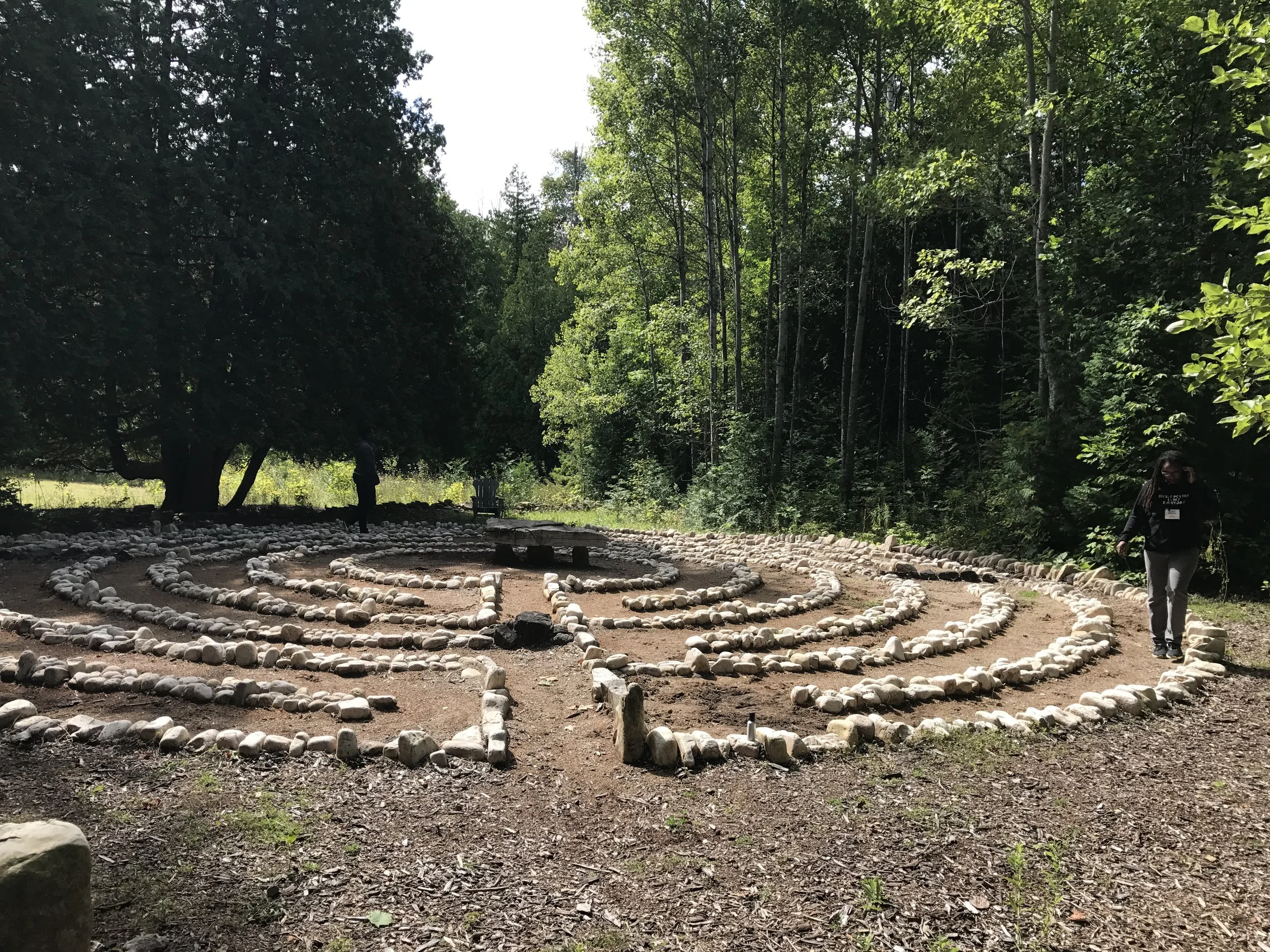the gentle harvest
/In my spiritual tradition, there are three progressive harvest festivals -- one in August, one in September, and one in October. As we approach the first harvest this year, I’m thinking about the three and how they differ. I’m thinking about this first harvest, the lightest of the harvests. Lightest as in, the furthest from the darkest part of the year. Lightest as in, more gathering flowers than reaping wheat or bundling hay. A gentle harvest.
Gentle harvest. A drawing together of what’s bloomed and ready to be gathered.
Pansies were one of my maternal grandmother’s favorite flowers. She had them by her house, and we had them by ours, and in the garden by the family cabin in Wisconsin. Pansies have this almost animal face, this variegation of color and black splatches in pattern on their fur-soft petals. There’s a theory that the word pansy has its origins in the French phrase pens ée, meaning lost in thought. The idea being that when a pansy blossom bobs from the heat, it looks like a person nodding yes, yes, to an idea.
What has me thinking about pansies today is the way they respond to the process of being pinched back. When a pansy flower withers and withdraws toward its stem, it’s time to pluck it gently so the plant knows to put its energy toward new growth.
Sometimes what our life needs is a full reaping followed by a plowing under of whatever isn’t useful except as fertilizer, so the field can lie fallow for a season and prepare for the next planting. Sometimes we have to get sober, quit the job, call off the wedding, sell the house and travel the country selling beaded bracelets and caricature drawings in the parking lots of concert venues.
And sometimes we need to get really close to the ground, kneel before the flowerbed and lightly, with thumb and forefinger, pull away what’s done to make energetic room for what’s next. Give up dairy for a year, try a new set of prayers, cancel plans made out of obligation, stop apologizing when no harm’s been done.
And sometimes, sometimes what we need is to go to the garden and gather what’s still blooming. We take it inside, put some pansies in baskets, sprinkle a couple of blossoms over ice cream, press a few faces between the pages of books to dry and be retrieved, colors lasting long past their season.
This is the gift of Lughnashagh, the first harvest: to honor not just the major revisions, the total life overhauls, the massive transformations, but also the shifts in perspective, the almost missable transcendences, the incremental victories. These too are sacred, and worthy of pause and recognition.
Welcome to the gentle harvest. Gather away.
